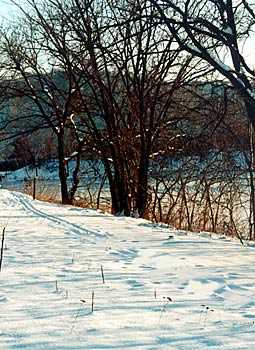In Wisconsin about twelve thousand years ago, as the ice retreated northward, animals and people moved into these newly exposed areas. The temperature was colder than today. It was very similar to present day Alaska or northern Canada. Glaciers were still present in northern Wisconsin. Southwestern Wisconsin was without glaciers, and is known today as the "Driftless Area." These people, called by archaeologists Paleo people, encountered a variety of environments from forests with pines and spruces to swamps.
Very little was left behind by those people who lived in this area 12,000 years ago. Most of the artifacts that have been recovered are made of stone or occasionally of bone. Although those early people left no written records for us to read, there are contemporary people whose lifeways are similar to these early people. Anthropologists study these people and make observations about their lives. Archaeologists have come up with a story about these first people using these observations along with the analysis of the few artifacts that were left behind.


